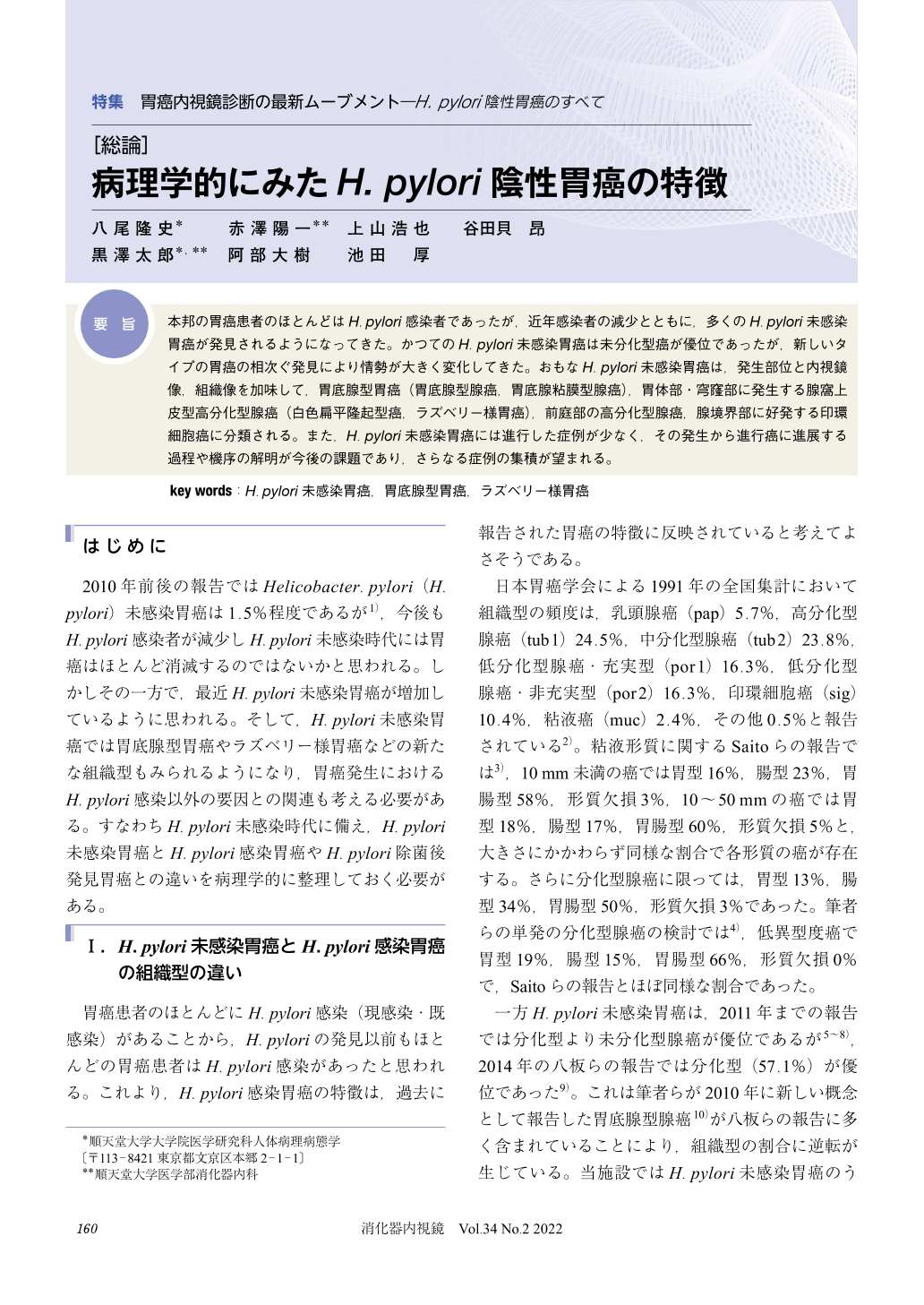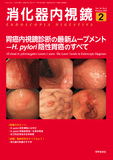Japanese
English
- 有料閲覧
- Abstract 文献概要
- 1ページ目 Look Inside
- 参考文献 Reference
要 旨
本邦の胃癌患者のほとんどはH. pylori感染者であったが,近年感染者の減少とともに,多くのH. pylori未感染胃癌が発見されるようになってきた。かつてのH. pylori未感染胃癌は未分化型癌が優位であったが,新しいタイプの胃癌の相次ぐ発見により情勢が大きく変化してきた。おもなH. pylori未感染胃癌は,発生部位と内視鏡像,組織像を加味して,胃底腺型胃癌(胃底腺型腺癌,胃底腺粘膜型腺癌),胃体部・穹窿部に発生する腺窩上皮型高分化型腺癌(白色扁平隆起型癌,ラズベリー様胃癌),前庭部の高分化型腺癌,腺境界部に好発する印環細胞癌に分類される。また,H. pylori未感染胃癌には進行した症例が少なく,その発生から進行癌に進展する過程や機序の解明が今後の課題であり,さらなる症例の集積が望まれる。
Most patients with gastric cancer in Japan were infected with H. pylori, but with the decrease in the number of infected with H. pylori in recent years, many gastric cancers uninfected with H. pylori have been discovered. In the past, undifferentiated histological type was predominant in H. pylori-negative gastric cancer, but the situation has changed significantly due to the successive discoveries of new types of gastric cancer. Taking into account the site of occurrence, endoscopic image, and histological feature, the main H. pylori-negative gastric cancers are classified into fundic gland type (adenocarcinoma of fundic gland type adenocarcinoma, gastric adenocarcinoma of fundic gland mucosa type), well-differentiated adenocarcinoma (whitish flat elevated type, raspberry-like) that occurs in the gastric fundus and body, well-differentiated adenocarcinoma in the antrum, and signet ring cell carcinoma that frequently occurs at the glandular border. In addition, there are few advanced cases of H. pylori-negative gastric cancer; elucidation of the process and mechanism of progression from its onset to advanced cancer is a future task, and further accumulation of cases is desired.

© tokyo-igakusha.co.jp. All right reserved.


